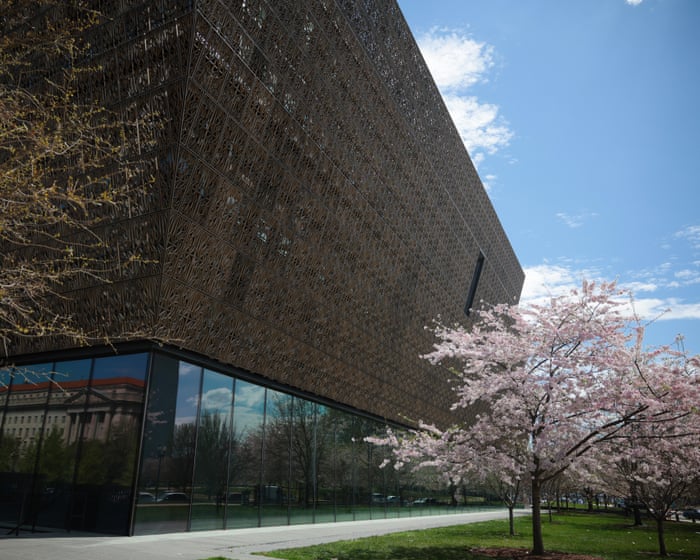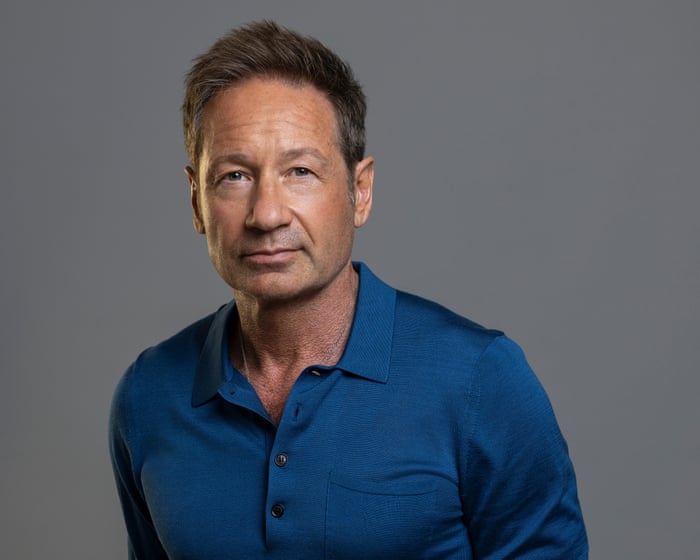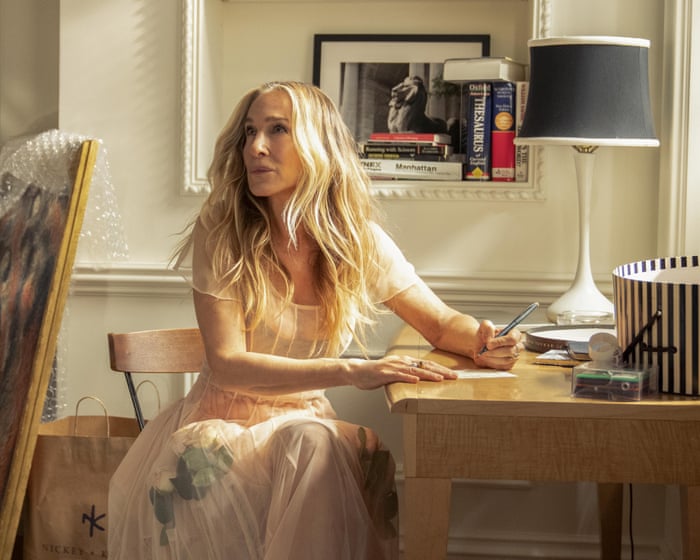It should come as no surprise that former cast members of reality shows that aired for over 15 seasons are running out of fresh ideas. Recently, Donald Trump—former star of NBC’s The Apprentice and current U.S. president—posted a lengthy rant on Truth Social, once again threatening the country’s leading cultural institutions to align with his political views. His target, as it has been before, was the Smithsonian’s National Museum of African American History and Culture (NMAAHC), which he described as “OUT OF CONTROL.” In his post, Trump complained, “Everything discussed [in NMAAHC exhibits] is how horrible our Country is, how bad Slavery was.” He continued in his typical style, using all caps and odd capitalization: “WOKE IS BROKE,” and added, “We have the HOTTEST Country in the World, and we want people to talk about it, including in our Museums.”
Many were left wondering what Trump saw as the positive aspects of slavery, and where they had heard this recycled argument before. His comments echoed those made just days earlier by fellow reality TV personality Jillian Michaels, a former trainer on NBC’s The Biggest Loser, which premiered alongside The Apprentice in 2004. Michaels has been rebranding herself from a verbally abusive fat-shamer to a MAGA influencer, making media appearances to push her views.
On CNN’s NewsNight, host Abby Phillip moderated a roundtable discussion about Trump’s months-long efforts to influence cultural institutions like the Kennedy Center and the NMAAHC. Michaels steered the conversation into a complaint about the museum’s focus on slavery in its exhibits on U.S. history. “Trump is not whitewashing slavery, he’s not,” Michaels insisted. “You cannot tie slavery to just one race, which is what every single exhibit [at NMAAHC] does.” Turning to Representative Ritchie Torres, who was seated beside her, she repeated far-right talking points: “Do you realize that less than 2% of white Americans owned slaves? Do you realize slavery is thousands of years old? Do you know who was the first race to try to end slavery?”
Torres tried to interject, explaining that slavery was a system of white supremacy, not just individual acts, but Michaels ignored him. (In reality, between 20% and 50% of white people in southern states owned enslaved people, and all white Americans benefited from slavery’s racial hierarchy. Phillip later posted a public correction to address Michaels’ false claims.)
Trump’s tirade marked an escalation of his previous calls to “restore truth and sanity to American history”—an effort to reshape exhibits in federally operated museums and galleries, politicizing their content. The NMAAHC has been a particular target, criticized by his administration for what it calls “corrosive ideology.” While earlier directives about the museum—affectionately nicknamed “The Blacksonian” by many visitors—had not singled out slavery as the issue, Trump’s Truth Social post more directly revived a century-old tactic of downplaying the brutality of chattel slavery.
If reality television has taught us anything, it’s that every narrative is scripted. Despite how easily their claims were disproven, both Michaels and Trump were in sync in their attempt to absolve white people of responsibility for slavery. They insisted that the conditions and legacy of slavery are exaggerated and denied its central role in U.S. history.
These arguments are a modern refresh of the century-old “lost cause” myth, promoted by groups like the United Daughters of the Confederacy (UDC). This organization, made up of over 100,000 white women, worked to make slavery respectable again by rebranding the Confederacy.The “genteel ladies” campaign used euphemisms to describe slave trading as a “celebration of memory” and a “southern way of life.” Like Michael and Trump, along with others who deny the realities of slavery, supporters of the “lost cause” promoted a distorted version of history. They claimed slavery was not the cause of the Civil War and portrayed it as a benevolent institution, arguing that Christianity and plantation life benefited African-descended people who they deemed unfit for civilization.
Members of the United Daughters of the Confederacy (UDC) used their roles as wives and mothers to influence children. They did this through catechisms, controlling school textbooks, organizing essay contests and scholarships, and creating groups like the Children of the Confederacy. Their supposed concern for white children masked their real goal: to terrorize Black people in the South. They exploited the ever-present threat of lynching, which targeted any Black person—even children—who dared to challenge a white woman. Confederate statues and memorials, which the UDC pushed to place near courthouses and in public spaces, were meant to intimidate African Americans simply participating in civic life.
Trump’s intense focus on the Smithsonian’s 19th installation suggests history is repeating itself. Since opening in 2016, the National Museum of African American History and Culture (NMAAHC) has welcomed over 10 million visitors, many of them families and school groups. The museum spans seven floors and 12 galleries, offering a thorough exploration of Black life in the U.S. It is both accessible to young students and impressive to renowned historians.
During a 2017 visit, Trump praised the museum as “a shining example of African Americans’ incredible contributions to our culture, our society and our history.” Today, the museum serves as a key resource for Black history education, especially as many public schools have reduced or eliminated such curricula under Republican-led “anti-woke” policies.
In a Truth Social post, Trump announced he had instructed his attorneys to “go through the museums and start the exact same process that has been done with colleges and universities,” comparing potential funding cuts and exhibit overhauls at the NMAAHC to actions taken against university programs related to slavery.
This strategy mirrors the UDC’s playbook: though they lost the war, they aimed to win the narrative by undermining Black progress and accurate accounts of slavery in education. For them, vindication was a tool for revenge, not justice—divorced from reality and built on a narrative where they cast themselves as victims of a war their families started. They mastered the manipulation of public memory to maintain racial hierarchy through control of education.
The late sociologist and historian James Loewen, who studied Confederate monuments, once explained that the past is what happened, while history is what we say about it—and some believe these should align. Yet we are in a struggle with those who seek to distort history, replacing it with fiction to excuse present-day wrongdoing.Throughout the 20th century, groups continued to push for revised school curricula and the installation of Confederate memorials, actively resisting Black advancement during the civil rights era. In the wake of George Floyd’s murder by the state, widespread protests led to the successful removal of nearly 100 such monuments. Despite this, hundreds still stand, including some that Trump has recently reinstated. He is reviving a century-old narrative in hopes of gaining political traction, but these tactics are outdated and far less effective now that opponents are familiar with the strategy.
Saida Grundy is an associate professor of sociology and African American studies at Boston University and the author of “Respectable: Politics and Paradox in Making the Morehouse Man.”
Frequently Asked Questions
Of course Here is a list of FAQs about this topic designed to be clear and helpful
General Beginner Questions
Q What is the Blacksonian
A Its a popular nickname for the Smithsonians National Museum of African American History and Culture in Washington DC
Q What was Trumps criticism about
A In 2020 he criticized a proposed Black Lives Matter curriculum from The New York Times 1619 Project but he mistakenly attributed it to the Blacksonian confusing the museum with the newspaper project
Q What is the myth mentioned
A The myth is a longstanding false claim that the Democratic Partys history of racism is being hidden or whitewashed to make Republicans look bad This is often used to deflect from discussions about systemic racism
Q Is the Blacksonian teaching that America is a bad country
A No The museums mission is to document the full complex history of African Americans which includes both the injustices of slavery and segregation and the triumphs resilience and contributions of Black Americans to the nations story
Advanced Detailed Questions
Q How is this myth connected to a century of political strategy
A The myth is part of the Southern Strategy a political approach used for decades It involves appealing to white voters by leveraging racial tensions and rewriting the history of which party was on which side of civil rights issues
Q Didnt the Democratic Party historically support segregation
A Yes historically the conservative segregationist Dixiecrat wing was part of the Democratic Party However after the Civil Rights Act of 1964 those voters largely realigned with the Republican Party while the Democratic Party became the home of the civil rights movement The parties effectively swapped positions on racial issues over the 20th century
Q What is the 1619 Project and why was it confused with the museum
A The 1619 Project is a journalistic initiative from The New York Times that reframes American history around the consequences of slavery It is a separate entity from the Smithsonian museum The confusion arose because both deal with African American history leading to the inaccurate conflation




